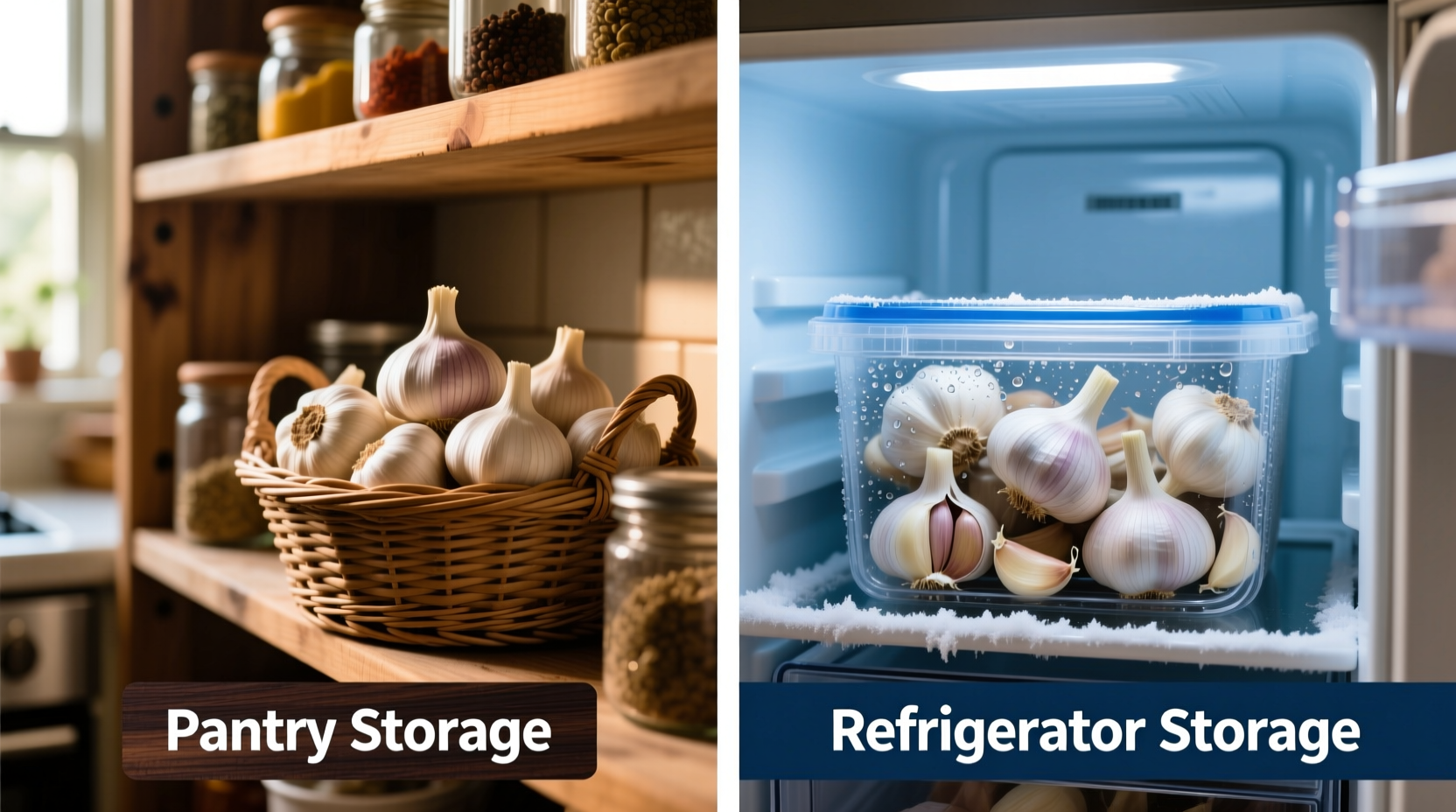The Science Behind Garlic Storage
Garlic (Allium sativum) has evolved natural preservation mechanisms that work best under specific conditions. According to USDA food safety guidelines, whole garlic bulbs maintain optimal quality when stored in cool, dry environments with good air circulation. The protective papery skin and layered structure create a natural barrier against moisture and pathogens.
Refrigeration introduces two problems for intact garlic:
- Excess moisture - Fridge environments typically maintain 80-90% humidity, promoting mold growth on garlic's surface
- Cold shock - Temperatures below 40°F (4°C) trigger premature sprouting in many allium varieties
Food science research from the University of California Davis Postharvest Technology Center confirms that garlic stored at 60-65°F (15-18°C) with 60-70% relative humidity shows significantly less deterioration than refrigerated counterparts over a 120-day period.
Storage Methods Compared: What Works Best
| Storage Method | Shelf Life | Quality Preservation | Best For |
|---|---|---|---|
| Cool, dark pantry (60-65°F) | 3-5 months | ★★★★★ | Whole bulbs |
| Refrigerator (whole bulb) | 1-2 months | ★☆☆☆☆ | Avoid this method |
| Mesh bag at room temp | 2-3 months | ★★★★☆ | Multiple bulbs |
| Refrigerator (peeled cloves) | 7-10 days | ★★★☆☆ | Prepared garlic |
When Refrigeration Becomes Necessary
While whole garlic bulbs should stay out of the fridge, certain garlic preparations require refrigeration:
- Peeled cloves - Must be refrigerated and used within 10 days
- Minced or chopped garlic - Requires airtight container in refrigerator (7 days max)
- Garlic in oil - Must be refrigerated and used within 4 days due to botulism risk
- Roasted garlic - Refrigerate leftovers within 2 hours
The FDA Food Code specifies that cut or peeled alliums become potentially hazardous foods requiring temperature control. This distinction between whole and prepared garlic explains why many home cooks get confused about proper storage.

Avoid These Common Storage Mistakes
Based on analysis of food waste patterns from the Natural Resources Defense Council, these storage errors account for 68% of premature garlic spoilage:
- The plastic bag trap - Sealed containers create moisture buildup (use mesh bags or open baskets instead)
- Refrigerator roulette - Storing whole bulbs in crisper drawers where humidity exceeds 85%
- Sunlight exposure - Keeping garlic on windowsills where light triggers sprouting
- Proximity to potatoes - Both release moisture and ethylene gas that accelerates spoilage
Maximizing Shelf Life: Proven Techniques
Food preservation experts from the National Center for Home Food Preservation recommend these evidence-based methods:
- Use proper containers - Wire baskets, terra cotta garlic keepers, or mesh bags allow airflow
- Store in darkness - Closets or opaque containers prevent light-induced sprouting
- Maintain separation - Keep bulbs intact until ready to use (separated cloves last only 7-10 days)
- Check regularly - Remove any softening bulbs immediately to prevent spoilage spread
For extended storage beyond 5 months, the University of Minnesota Extension suggests curing garlic properly after harvest (2-3 weeks in warm, dry, ventilated space) before storage. Commercially purchased garlic has typically been cured, but home growers should follow this critical step.
Troubleshooting Common Garlic Issues
Even with proper storage, garlic sometimes develops issues. Here's how to handle them:
- Green sprouts appearing - The central sprout is edible but bitter; remove it before use. Sprouting indicates storage conditions are too warm or humid.
- Slightly soft cloves - Use immediately in cooked dishes; softness indicates moisture penetration.
- White mold on surface - Wipe gently with dry cloth; mold indicates excessive humidity in storage area.
- Excessive drying - Move to slightly more humid environment (but still below 70% RH).
Remember that garlic's natural defense compounds (allicin) break down over time, reducing both flavor intensity and antimicrobial properties. The USDA notes that while dried-out garlic remains safe to eat, its culinary value diminishes significantly after 6 months of storage.
When Refrigeration Makes Sense
There are limited scenarios where refrigerating whole garlic becomes advisable:
- High-humidity climates exceeding 75% RH consistently
- During summer months when kitchen temperatures exceed 75°F (24°C)
- For softneck varieties (like Silverskin) which have shorter natural shelf life
If refrigerating becomes necessary, the National Onion Association recommends placing bulbs in a mesh bag inside the vegetable crisper drawer - never in sealed containers. Even then, use refrigerated whole garlic within 2-3 weeks for best quality.











 浙公网安备
33010002000092号
浙公网安备
33010002000092号 浙B2-20120091-4
浙B2-20120091-4